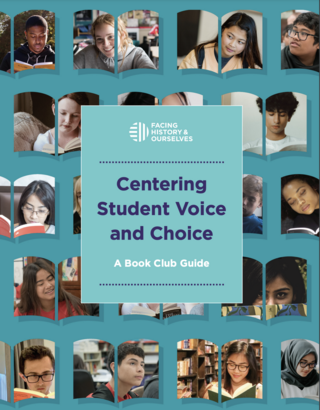Guide
Centering Student Voice and Choice: A Book Club Guide
Implement book clubs that build community and help students make meaningful connections to books they are excited to read.
Subject
- English & Language Arts
Language
English — USUpdated

Get This Resource
Centering Student Voice and Choice: A Book Club Guide
Date of Publication:
July 2021
Download a PDF of this resource for free
Download this resource for free. By signing up for a Facing History account, you can access this and other resources. You'll also be able to save items for later and build collections for your class. It's fast, easy, and free!
Grounded in student autonomy and choice, book clubs can help students feel a sense of agency in their learning, build reading time into their daily routines, and make meaningful connections around books they are excited to read.
This guide includes resources and tools designed to help you launch student-centered book clubs, including tips for identifying interesting books and getting them to students, teacher planning checklists, and student-facing handouts that support discussion and engagement.
Developing Communities of Readers

Developing Communities of Readers
Dr. Kimberly Parker talks about the importance of student choice and the value of seeing themselves in the books they read.
Credit:
Facing History & Ourselves
How to Cite This Guide
Facing History & Ourselves, “Centering Student Voice and Choice: A Book Club Guide”, last updated September 26, 2022.
Using the strategies from Facing History is almost like an awakening.
—
Claudia Bautista, Santa Monica, Calif












